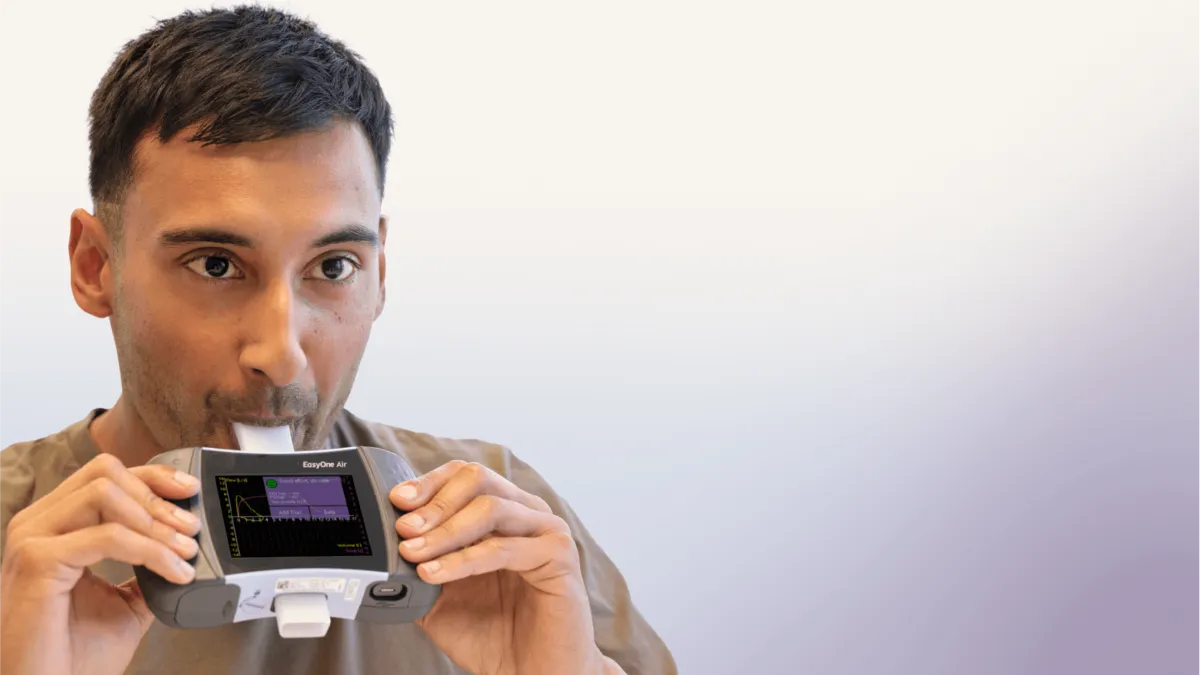Redefining COPD

COPD remains a major contributor to global suffering #
Chronic obstructive pulmonary disease (COPD) continues to be a leading cause of death and suffering in the US and across the globe. As of 2020, more than 6% of Americans — nearly 17 million people — had been diagnosed with COPD. However, half of the actual current COPD cases are expected to remain undiagnosed. Unfortunately, even with decades of research into the condition, morbidity and mortality rates due to COPD remain far from acceptable. Compared to the treatment of other major contributors to global suffering like stroke and coronary artery disease, COPD has not seen as much improvement, suggesting that the progress in scientific and medical understanding of COPD hasn’t translated into the intended improvements in outcomes.
To account for these failures and provide guidance for how to translate our improved understanding of COPD into better outcomes for the patient community, a recent paper by Dr. Celli et al. published in the high-impact journal American Journal of Respiratory and Critical Care Medicine provides a strong recommendation: Redefine COPD and its diagnostic criteria.
The current definition of COPD as outlined by the Global Initiative for Chronic Obstructive Lung Disease (GOLD) is:
COPD is a common, preventable and treatable disease that is characterized by persistent respiratory symptoms and airflow limitation that is due to airway and/or alveolar abnormalities usually caused by significant exposure to noxious particles or gases and influenced by host factors including abnormal lung development. Significant comorbidities may have an impact on morbidity and mortality.
Why aren’t COPD outcomes improving? #
Dr. Celli et al. have two primary issues with this definition: its focus on cigarette smoking (“exposure to noxious particles or gases”) as the singular and primary driver for COPD; and its requirement that COPD be characterized by airflow limitation, despite the evidence of impairment present prior to spirometric airflow limitation. The authors analyzed the current scientific literature and provide a compelling argument that while cigarette smoking is a major contributor to the genesis of COPD it’s not the only factor. Genetics, early abnormal lung developments, the presence of asthma, and infections have also been shown to significantly increase the likelihood of developing COPD. Strikingly, COPD brought about by different causes evolve in different patterns.The researchers propose categorizing COPD into subtypes accordingly.
As for diagnostic criteria, the researchers believe that requiring evidence of airflow limitation to diagnose COPD is a problem that results in patients being diagnosed too late. Spirometric airflow limitation is not the only way to measure pulmonary involvement. Using computed tomography (CT) scans, structural airway damage can be observed prior to airflow limitation. In the COPDGene study, another promising technique, diffusing capacity of the lung for carbon monoxide (DLCO), was found to offer a more sensitive way to measure lung involvement than spirometry alone.
An improved COPD definition offers hope to patients, researchers, and clinicians #
There are challenges when defining a condition and establishing diagnostic criteria: Using a definition that is too narrow or too broad can make it nearly impossible to diagnose and research a condition. The medical community must recognize that the current definition is limiting how research is conducted, and as such, could be preventing the desired improved outcomes from becoming reality. Fortunately, there are examples of other heterogeneous conditions — diabetes, for one — with definitions that consider multiple causes and clinical representations.
The definition proposed by Celli et al. accounts for the evidence of multiple etiologies that individually or synergistically cause COPD and for the hallmarks of COPD not currently captured by the current definition. The researchers propose that COPD should be redefined as follows:
COPD is a heterogeneous lung condition characterized by chronic respiratory symptoms (dyspnea, cough, expectoration) due to persistent abnormalities of the airways (bronchitis, bronchiolitis), alveoli (emphysema) and/or pulmonary vessels, confirmed by spirometrically determined airflow limitation and/or objective evidence of structural or physiological pulmonary dysfunction.
The current definition has guided how COPD has been investigated in the clinic and the laboratory, with the majority of research focusing on elderly populations of smokers. The definition proposed by Celli et al. would shift how COPD is viewed and treated in the clinic and researched in the laboratory. It updates the current definition on the basis of decades of research from across the world and provides a promising new approach to guide COPD treatment and research.
The authors acknowledge that this new definition dramatically shifts the conversation around COPD and even calls into question whether the name “chronic obstructive pulmonary disease” should still be used.Yet, they emphasize that this paradigm shift is its purpose: By recognizing the multiple etiologies and clinical presentations of COPD, the way it’s treated and researched becomes far more nuanced — and this should translate into improved outcomes for the patients. Since most research on COPD has been conducted either with elderly populations or people with COPD caused by smoking, the new definition would empower clinicians and researchers by giving them alternative approaches to better understand the different mechanisms of COPD. With an improved understanding of these various mechanisms, drug developers could target different stages of the clinical presentation of COPD or different parts of the biological mechanism. A more complex understanding of what might contribute to COPD would give patients hope — and promise — by opening up clinical research opportunities and a more nuanced understanding of their condition.
Patients with COPD deserve a better quality of life, especially in view of the evidence that new research has found. A new definition offers hope to patients, clinicians, and researchers.
Written by

Tré LaRosa
Tré LaRosa is a consultant, scientist, and writer in the Washington, DC area with extensive experience working in research (basic, translational, and clinical) and on patient-reported outcomes. He has also written extensively on neuroscience, pulmonology, and respiratory conditions, including from the patient perspective. He enjoys learning, reading, writing, spending time outdoors, and telling everybody about his mini golden retriever, Duncan.









